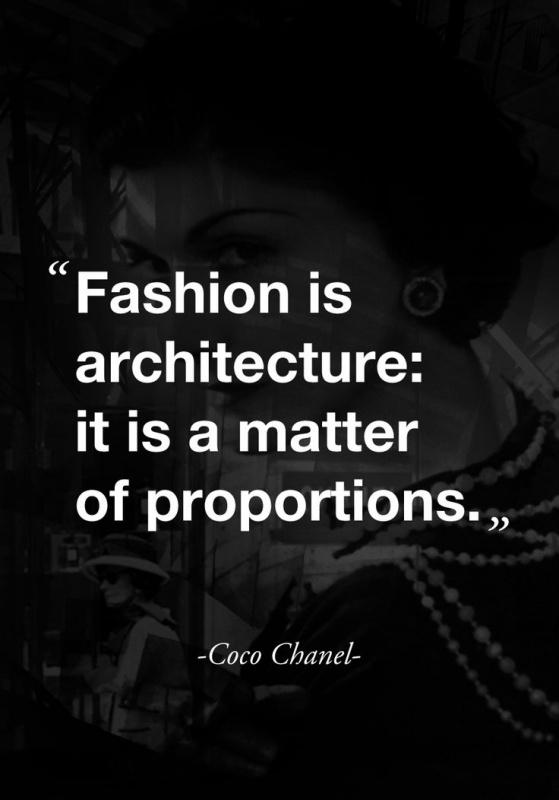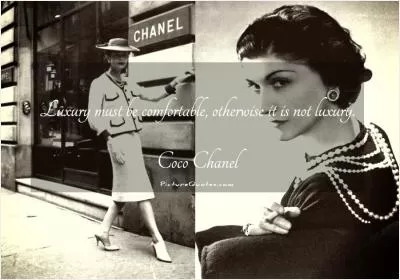Fashion is architecture: it is a matter of proportions

Fashion is architecture: it is a matter of proportions
Coco Chanel, the iconic French fashion designer, famously said, “Fashion is architecture: it is a matter of proportions.” This statement perfectly encapsulates Chanel’s approach to design, as she revolutionized the fashion industry by creating timeless and elegant pieces that were both stylish and comfortable. Chanel’s understanding of proportions and balance in fashion was unparalleled, and her innovative designs continue to influence the industry to this day.Chanel’s background in architecture played a significant role in shaping her unique perspective on fashion. She understood the importance of structure and balance in both disciplines, and she applied architectural principles to her clothing designs. Chanel believed that clothing should not only be aesthetically pleasing but also functional and comfortable. She focused on creating pieces that were well-proportioned and flattering to the body, rejecting the restrictive and uncomfortable styles that were popular at the time.
One of Chanel’s most iconic contributions to fashion was the creation of the “little black dress.” This simple, yet elegant garment became a staple in every woman’s wardrobe, thanks to its timeless design and perfect proportions. Chanel understood that the key to creating a classic piece of clothing was to focus on the proportions and silhouette, rather than on flashy embellishments or trends. The little black dress became a symbol of Chanel’s philosophy that “simplicity is the keynote of all true elegance.”
Chanel’s attention to proportions extended beyond clothing to accessories and jewelry as well. She believed that every element of an outfit should be carefully considered and balanced to create a cohesive and harmonious look. Chanel’s signature quilted handbags, pearl necklaces, and two-tone shoes all reflected her commitment to proportion and balance in design.












 Friendship Quotes
Friendship Quotes Love Quotes
Love Quotes Life Quotes
Life Quotes Funny Quotes
Funny Quotes Motivational Quotes
Motivational Quotes Inspirational Quotes
Inspirational Quotes